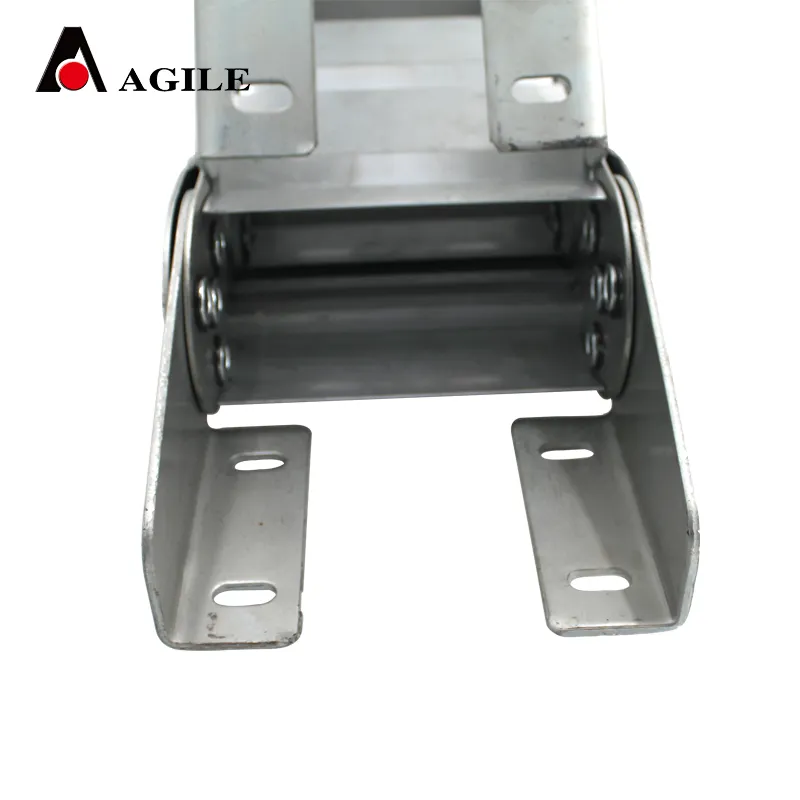drag chain for cnc
Understanding Drag Chains for CNC Machines
In the world of CNC (Computer Numerical Control) machining, precision and efficiency are paramount. One of the often-overlooked components that contribute significantly to the effective operation of CNC machines is the drag chain. Drag chains, also known as energy chains or cable carriers, play a crucial role in maintaining organization and functionality in the workspace. This article will delve into what drag chains are, their functions, benefits, and considerations for CNC machining applications.
What are Drag Chains?
Drag chains are specially designed systems that guide and protect cables, hoses, and pneumatic lines associated with CNC machines. They are constructed from durable materials such as plastic, steel, or aluminum, allowing them to withstand the wear and tear of industrial environments. Drag chains come in various sizes and configurations to accommodate different types of wiring and tubing, making them versatile for a multitude of CNC applications.
Functionality of Drag Chains
The primary function of a drag chain is to organize and secure cables and hoses that move with the CNC machine's moving parts. As CNC machines operate, components like the spindle, tool changer, and worktable undergo significant motion. Without a drag chain, cables and hoses could become tangled, damaged, or lead to operational inefficiencies.
Drag chains not only protect these vital components from physical damage but also prevent them from obstructing machine operations. As CNC machines execute precise movements, a well-organized drag chain allows the machine to operate smoothly, minimizing the risk of accidents caused by loose or exposed wires.
Benefits of Drag Chains
1. Protection The foremost benefit of a drag chain is the protection it provides to cables and hoses. By shielding these components from abrasion, risk of entanglement, and harsh environmental conditions, drag chains extend the lifespan of wiring and reduce replacement costs.
2. Efficiency Incorporating drag chains into CNC setups enhances operational efficiency. A well-arranged drag chain prevents cable tangles and kinks, allowing for smoother machine movements and reducing downtime associated with maintenance or repairs.
3. Organization Drag chains help maintain a clean and organized workspace. By providing a structured route for cables and hoses, they minimize clutter around the CNC machine. This not only helps with aesthetics but also promotes safety in the workplace.
drag chain for cnc

4. Flexibility Modern drag chains are designed to accommodate a variety of sizes and types of cables and hoses. Companies can customize their drag chain systems according to the specific requirements of their CNC machines, ensuring compatibility and performance.
5. Reduced Noise Levels Drag chains can help dampen noise created during machine operation. This is particularly beneficial in settings where noise reduction is critical, contributing to a more pleasant working environment.
Considerations When Choosing Drag Chains
When selecting drag chains for a CNC setup, there are several key factors to consider
1. Size and Configuration It is crucial to choose the right size and configuration of the drag chain that suits the specific CNC machine and its motion profile. Proper sizing ensures that the cables and hoses fit snugly and operate effectively.
2. Material Depending on the working environment—be it indoor or outdoor, wet or dry—selecting the right material for the drag chain becomes essential. Plastic chains may suffice for lighter duties, while steel or aluminum may be more appropriate for heavy industrial settings.
3. Cable and Hose Types Different types of cables and hoses may require specific layouts. Understanding the roles of each component can aid in designing a drag chain that optimally supports the CNC machine.
4. Installation and Maintenance While drag chains deliver considerable benefits, their installation and maintenance should also be factored into the decision-making process. Easy installation and low-maintenance designs will save time and reduce costs in the long run.
Conclusion
Drag chains are a vital component of CNC machining systems that enhance organization, protection, and operational efficiency. By understanding their functionalities, benefits, and key considerations, manufacturers can optimize their CNC machines' performance, leading to improved productivity and cost savings. In the ever-evolving landscape of CNC technology, investing in quality drag chains is a step towards ensuring long-term success and reliability.








